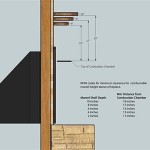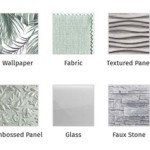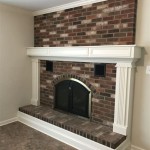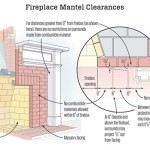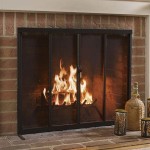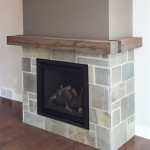Exploring the Open Front Fireplace Insert: Design, Functionality, and Considerations
The open front fireplace insert presents a unique heating and aesthetic option for homeowners seeking to enhance their existing fireplaces. Unlike closed-combustion inserts that feature a sealed glass door, open front models maintain a more traditional fireplace appearance with a direct view of the flames. Understanding the characteristics, benefits, and limitations of these inserts is crucial for making an informed decision about fireplace modifications.
An open front fireplace insert is essentially a firebox designed to be installed within an existing masonry or prefabricated fireplace. The primary purpose is to improve heating efficiency and reduce smoke spillage compared to a traditional open fireplace. While they offer a closer aesthetic to traditional fireplaces, they differ in functionality and energy efficiency compared to closed-front models. Their design allows for a more direct and unimpeded view of the fire, appealing to individuals who prioritize the ambiance of a traditional hearth.
The construction of an open front insert often involves a steel or cast iron firebox, accompanied by a surround panel to cover the existing fireplace opening. The insert is connected to the existing chimney flue, but may require modifications such as a chimney liner to ensure proper drafting and the safe removal of combustion byproducts. The overall installation process often necessitates professional evaluation to confirm compatibility with the existing fireplace structure and adherence to local building codes.
Key Point 1: Understanding the Benefits of Open Front Fireplace Inserts
Open front fireplace inserts offer several advantages, primarily revolving around aesthetics and ease of use. One of the main draws is the unobstructed view of the fire. This direct access provides a more authentic fireplace experience, appealing to homeowners who value the visual appeal of an open flame. The crackling sound and the radiant warmth feel more immediate compared to viewing the flames through a glass door.
These inserts can also simplify fire tending. Adding wood and adjusting the fire is generally easier with an open front because there is no need to open and close a door. This can be a convenience for those who enjoy actively managing their fire. Furthermore, the open design can sometimes facilitate the use of larger logs than those accommodated by smaller, closed-front inserts.
In some cases, open front inserts can be less expensive than their closed-combustion counterparts. This cost difference can make them a more attractive option for budget-conscious homeowners. However, the long-term cost-effectiveness should consider the lower heating efficiency.
Another potential advantage lies in the simpler design. Without the need for airtight seals and intricate venting systems characteristic of closed-combustion models, open front inserts are sometimes easier to maintain. This can translate to fewer potential points of failure and lower long-term maintenance costs.
Key Point 2: Addressing the Limitations and Considerations
Despite their aesthetic appeal, open front fireplace inserts have inherent limitations concerning heating efficiency and air quality. A significant drawback is their lower heating efficiency compared to closed-combustion inserts. The open design allows for a continuous flow of air into the firebox, which can lead to significant heat loss up the chimney. This means that a larger proportion of the heat generated escapes into the atmosphere rather than warming the room. Consequently, open front inserts are typically less effective as a primary heating source, especially in larger spaces.
Air quality is another crucial consideration. Open front fireplaces traditionally produce more smoke and particulate matter compared to closed-combustion models. This is because the uncontrolled airflow can result in incomplete combustion. Increased smoke production can contribute to indoor air pollution and potentially pose health risks, especially for individuals with respiratory sensitivities.
Safety is an important aspect to consider. Open front fireplaces require the use of a fire screen to prevent sparks and embers from escaping into the room, reducing fire hazards. While this is common practice, it is a vital safety precaution that must be diligently followed. The potential for backdrafting, where smoke and combustion gases enter the room instead of exiting through the chimney, is also a greater concern with open front designs. Adequate chimney drafting and proper maintenance are crucial to mitigating this risk.
Building codes and regulations often impose stricter requirements on open front fireplaces due to their lower efficiency and higher emissions. It is imperative to verify local regulations concerning fireplace inserts to ensure compliance. This may involve obtaining permits and undergoing inspections to validate that the installation meets safety and environmental standards.
Key Point 3: Factors Influencing the Choice of an Open Front Insert
Selecting an open front fireplace insert involves carefully evaluating various factors, including the size of the room to be heated, the frequency of fireplace use, and the homeowner's aesthetic preferences. The size of the space is particularly important because an open front insert may not be sufficient to provide adequate heat in a large room. If the primary goal is supplemental heating in a smaller area, an open front model might be a viable option.
The frequency of use also plays a role. For homeowners who primarily use the fireplace for occasional ambiance rather than regular heating, the lower efficiency of an open front insert might be acceptable. However, for frequent use as a supplementary heating source, a closed-combustion insert would generally be a more practical choice.
Aesthetic considerations are paramount for many homeowners. If the desire for a traditional fireplace experience with an unobstructed view of the flames outweighs concerns about efficiency, an open front insert may be the preferred option. The visual appeal of the open fire can create a cozy and inviting atmosphere, which is a priority for some individuals.
Budget constraints can also influence the decision. While the initial cost of an open front insert might be lower, the long-term operating costs could be higher due to lower efficiency. It is important to factor in the ongoing expense of fuel and potential maintenance when comparing different insert options.
Finally, consulting with a qualified fireplace professional is highly recommended before making a final decision. A professional can assess the existing fireplace structure, evaluate the specific heating needs, and provide guidance on selecting the most suitable insert model. They can also ensure that the installation is performed safely and in compliance with relevant building codes.
Proper installation and maintenance are crucial for ensuring the safe and efficient operation of any fireplace insert. Regular chimney cleaning and inspections are necessary to prevent creosote buildup, which can increase the risk of chimney fires. The insert itself should also be inspected periodically for any signs of damage or deterioration. Prompt repairs of any issues can help ensure the longevity and safety of the fireplace.
The proper use of seasoned firewood is also important. Dry, seasoned wood burns more efficiently and produces less smoke than green or damp wood. This not only improves the heating performance of the insert but also reduces the amount of pollutants released into the atmosphere.
Open front fireplace inserts represent a balance between aesthetics and functionality. A potential homeowner must consider the advantages along with the inherent limitations to make the best possible decision. Careful consideration of heating requirements, budgetary constraints, and safety concerns are indispensable. By weighing all the factors, a homeowner can determine if an open front fireplace aligns with their specific requirements and lifestyle to offer an enjoyable and safe experience.

How Fireplace Inserts Work We Love Fire

How To Buy A Gas Fireplace Insert Buyer S Guide From Regency

Superior Outdoor Collection 36 Ss Gas Fireplace Front Open White Stacked Refractory Panels Electronic Propane Vre4336zep

Welcome Golden Blount Incgolden Inc

Top 5 Reasons To Consider A Fireplace Inserts Wi Ia Il

Fireplaces Wood Superior 36 Outdoor Vent Free System Stainless Steel Front Open Vre4336

Fireplace Inserts Wood Gas Pellet Sierra Hearth And Home

What Is The Difference Between Open And Glass Fronted Fireplaces

Fireplaces Smith May Inc

Fireplaces Inserts Wood Gas Fireplace Xtrordinair

